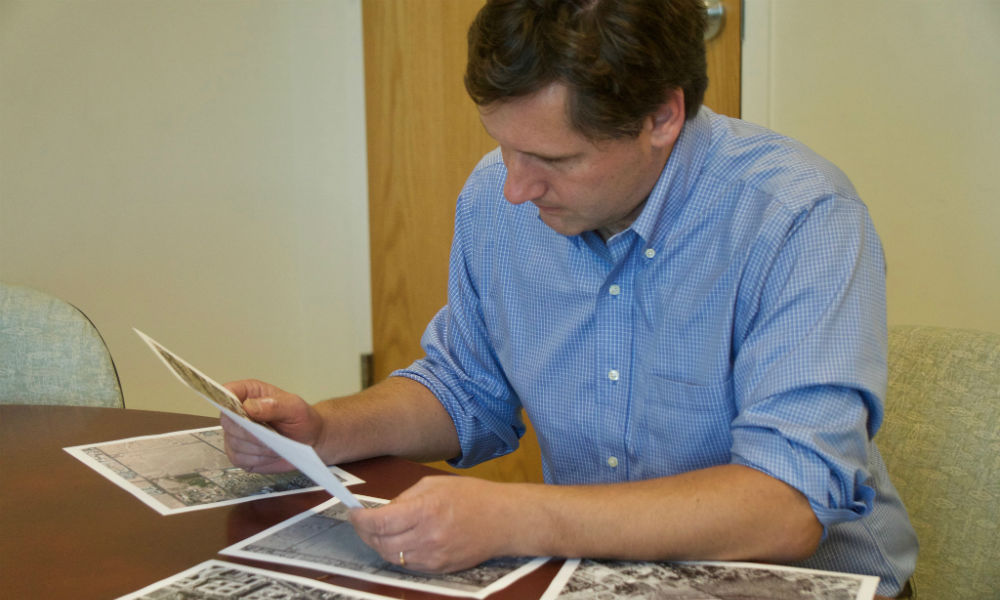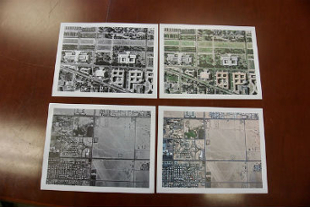GS professor brings old images to life
Geography
SUMMARY: GS Professor, Zachary Bortolot, has colorized aerial images of Washington, DC; Minneapolis, MN; Palm Springs, CA; and Harrisonburg, VA dating from 1937.
By: Zachary Harris, CISE Staff Writer
Zachary Bortolot, an associate professor of geographic science, has made aerial photographs a staple of his professional life. “I’ve done a lot of work with historical images going all the way back to grad school. We used to have boxes and boxes of black and white photos which we used for teaching students how to map all sorts of things,” he said.
Upon arrival at JMU, Bortolot took immediate advantage of the university’s archive of black and white images. The majority of these photos are aerial images of Harrisonburg and the surrounding Shenandoah Valley, dating from 1937. “Just looking at them and seeing how much things have changed made me realize that there’s a lot of information out there that often people aren’t aware of,” Bortolot said.
 While the pictures illustrate Harrisonburg’s steady growth over time, Bortolot notes that modern viewers are often bored by the simple fact that the images are black and white. Consequently, he has been working towards colorizing these and other photos. Bortolot has colorized aerial images taken throughout the U.S., including Washington, DC; Minneapolis, MN, Palm Springs, CA and Harrisonburg, VA.
While the pictures illustrate Harrisonburg’s steady growth over time, Bortolot notes that modern viewers are often bored by the simple fact that the images are black and white. Consequently, he has been working towards colorizing these and other photos. Bortolot has colorized aerial images taken throughout the U.S., including Washington, DC; Minneapolis, MN, Palm Springs, CA and Harrisonburg, VA.
“The vast majority of people find them a lot easier to interpret,” Bortolot said. “I think people find them a lot more impactful. If you look at an image of Harrisonburg from the 1950s, a colorized image will show all of this green representing farms that have changed to shades of gray in modern images.”
To bring color to black and white images, Bortolot created his own computer-based method of accomplishing this task. “With air photos, you actually have a modern image of the exact same area that you can pull information from,” Bortolot said. “With my method, it has a two-pronged approach. One is for areas that have changed and then you have another approach for areas that have not changed.”
Bortolot’s general approach is to overlay a new photograph on top of its black and white counterpart. He then examines the component pixels of both photos. If a pixel has not changed between the photographs, Bortolot transplants the color, through a computer algorithm, of the new image onto the black and white image. For areas that have changed, the algorithm takes information from the new image and applies color to similar areas.
When asked about his long-term goals for this project, Bortolot hinted that he wants it to be more than just a side project. “JMU decided to go ahead and apply for a patent,” he said. “I would love to eventually start up a company and make this more widely available.”
For examples of colorized images please visit Dr. Bortolot’s project web page, http://www.pan2color.com.
